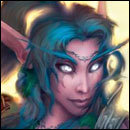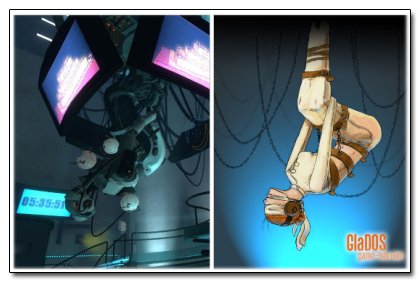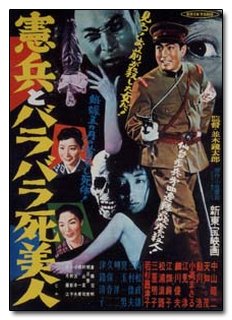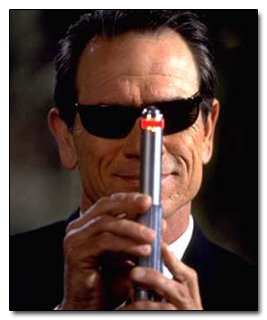8 Creepy Video Game Urban Legends (That Happen to Be True)

The urban legends of every era always seem to reflect whatever teenagers are doing at the time: Forty years ago, they told stories about serial killers attacking kids making out in cars and escaped criminals hiding in someone's backseat, because they didn't have jetpacks yet. Today, most young people seem to spend their time sitting or standing in front of video game screens, so it makes sense that we should get legends like ...
Super Mario Galaxy 2 -- The Shadow People of Hell Valley

In a game like Mario, you're usually too focused on not falling off the crumbling catwalk into the lava below to ever really stop and look around. Especially in Mario Galaxy, where you are zipped across space from one world to the next, the vastness of the game world just whipping by you in a blur.

For the same effect, we recommend huffing spray paint.
But if you ever do get the chance to stop and stare into the distance, you'll find some extremely creepy shit. Specifically, in one level of Super Mario Galaxy 2, if you switch to first-person view and look in a certain direction, you can see shadowy figures standing at the edge of the galaxy.
Anywhere you go on that level, if you look up and to the left, they'll always be there. You can't come any closer. You never meet those "people," and nobody in the game ever mentions them.

They're just THERE.
So this is basically a video game version of the Slender Man urban legend. Fans have already started seeing them in other levels, writing fan fiction stories about them and speculating on what they could be: Local villagers (that is to say, aliens) watching Mario from afar? Those weird-looking giants from Legend of Zelda: Majora's Mask?

But couldn't they just be, we don't know, trees or something? Well, somebody got curious and started sifting through the actual files of the game. And this is where things get really fucked up.
Turns out the sky pattern for that area is called "BeyondHellValley." "Hell Valley" isn't the name of that level, or any level in Mario Galaxy. It doesn't even sound like something you'd find in a Mario game. As for the shapes themselves? They're called "HellValleySkyTree." Ah, see! They're just trees. Now let's pull out the image file itself ...

THEY ARE NOT TREES.
So what the hell, Nintendo? Some claim "Hell Valley" is the Japanese name for that level (which wouldn't be surprising, actually), or the name of a beta level that was abandoned ... but none of that comes anywhere near explaining why those dudes are there and what we did to make them look at us that way.


In some ways, the virtual world of an MMORPG is just like the real world; where the real world has creepy-ass abandoned hospitals and prisons that no one would dare spend the night in, games like World of Warcraft have hidden areas that were closed off and abandoned by game makers but still exist if you know how to sneak in. And they're equally creepy.

Real and virtual subways are both filled with shadowy rapists.
Take, for example, the unused dungeon just outside a game area called Karazhan (sometimes referred to by players to as "Lower Karazhan"). It's a dungeon that was apparently scrapped partway through development, and in front of the entrance is an impassable gate. But just as with that old abandoned mine outside of town, you can sneak in (in this case, you can get around the gate by way of various glitches). And inside, you find this:

Among the typical WoW dungeon maze of tunnels, you find The Upside-Down Sinners. It's exactly what it sounds like: an underwater room chock full of handless, eyeless people, chained upside-down and left to drown.
Popular speculation is that Blizzard backed down from using the dungeon because they were afraid that it might bump the game's rating to M, but there's no real way to know.

"This shit's getting dark. Let's just throw some murlocs in a cave and use that instead."
But that's not all the creepiness WoW has to offer. The first town you encounter after the human starting area is a place called Goldshire, and it has its own dark secret.
A house on the edge of Crystal Lake, which is just east of town, is normally empty. At 7 a.m. on the game's server clock, however, you can sometimes catch six little kids in the room, standing in a strange formation.

Full video here.
You think that's creepy? They used to stand in a pentagram.
Some players have heard strange noises, like banshee screams or the voice of C'Thun, a former high-end boss ripped straight out of the Cthulhu Mythos, saying, "You will die." You can even follow them from Stormwind City, the human capital, all the way to the house, and they never break their cute little pentagram formation the whole way.

Aw, you kids are just adorable with your little satanic games!
Creepiest of all, though, is the music that plays when you enter the room.
It's completely custom music, found nowhere else in the game, and if there's one thing Blizzard likes even more than re-using art, it's re-using music. (If you don't believe us, go to any inn in the game.) That means it wasn't some lone weirdo who programmed these kids' behavior. They had to get the music department to construct an all-new piece to go along with them.
Portal -- GLaDOS Bound and Gagged

There are only two characters in Portal -- the one you control and a deranged A.I. called GLaDOS. You spend the entire game jumping through GLaDOS' hoops, solving the teleportation-based puzzles she leaves for you (on the promise of cake) and slowly piecing together that something's fucked up here.

And thus was born a particularly virulent meme.
Finally, at the end of the game, you meet the real GLaDOS, a huge, robotic entity. You fight her and you win and everything's great (albeit in an "... or is it?" sort of way).
But have you ever taken a close look at GLaDOS?

At first she looks like a mess of machinery and cables, but if you look closely, she actually resembles a human figure hanging upside-down. That's not a coincidence: If you play through the game with the commentary track on, Jeremy Bennett, the game's art director, says, "Eventually, we settled on a huge mechanical device with a delicate robotic figure dangling out of it, which successfully conveys both GLaDOS' raw power and her femininity."

Man, that's hot.
Originally, according to Bennett, she resembled an upside-down version of Botticelli's "Rise of Venus":

But her final model doesn't really look like that at all. The posture is all wrong. In fact, the people at game-ism.com think she looks more like a woman who has been bound and gagged:

Drawing via Game-Ism
So what does that mean? According to the folks at that site, all GLaDOS wanted was to be free (a goal you help her achieve when you kill her). As for how she got like that in the first place, sometimes it's better not to know.
Mario Universe -- Luigi Is Dead and Daisy Is Deformed

So Mario games are full of creepy stuff, apparently. Knowing that, we're not so shocked to find out that Mario fans are always looking for hidden conspiracies in those games. We are, however, a little disturbed by what they've actually found.

We didn't think things could get much creepier than the live-action, pedo-stache-tastic movie. We were wrong.
Take Luigi's Mansion for GameCube, which is about Mario's taller, greener brother hunting ghosts in an old mansion. According to an urban legend that keeps popping up in the always-reliable gaming message boards, if you go to a certain room, stand in a specific spot and wait for lightning to strike, you can see what looks like Luigi's shadow hanging from the ceiling. As if he had just committed suicide.
But that's ridiculous, of course. We'll even go ahead and disprove this rumor by taking a look at that part of Luigi's Mansion and ...
... oh, shit. That does look remarkably like someone's shadow hanging from the ceiling, in a game about haunted mansions and ghosts.

There's some debate about what it actually is: Some say it's a glitch, while others claim the game was originally meant to be much darker and this is one of the many leftovers from the beta version ... but they're all ignoring the simplest answer: Luigi has been a ghost all along.

And then there's Luigi's girlfriend, Princess Daisy, possibly the most fucked-up character in Mario history. If you don't believe us, do a YouTube search for "Hi, I'm Daisy!" Apparently, when they included her in Mario Kart: Double Dash for GameCube, they only gave her a single spoken phrase ("Hi, I'm Daisy!"), causing her to repeat the same thing over and over and over like a murderous psychopath.

Few things freak us out more than Princess Fucking Daisy.
But in case you don't think that's disturbing enough, how about the fact that she has a third eye in the back of her head? If you win Daisy's trophy in Super Smash Bros. Melee, go to the trophy gallery and zoom in until the camera clips underneath her hair. You can see something that clearly should not be there.

Luigi was afraid to say anything, being unfamiliar with female anatomy.
This could be a modeling error, but what's odd is that it doesn't look exactly like Daisy's regular eyes: It's all misshapen and gross-looking.

This is not how third eyes should look at all.
This is so well-known that Daisy's third eye was later incorporated into her character in M.U.G.E.N., a freeware fighting game that takes random characters from different franchises. Oh, and it shoots lasers:
EarthBound -- All About Abortion

For most people, their only experience with EarthBound (also known as Mother 2 in Japan) is the characters and levels that also appear in the Super Smash Bros. games: little kids with bats and yo-yos in bright, colorful environments. And that's a pretty accurate representation of about 95 percent of the game, where you run around with four little kids who are trying to save the world by fighting things like bugs and robots and taxicabs.

It's like Pokemon, but less flashy.
But the last hour of the game is something really different from everything that comes before it. First the kids have their souls ripped from their bodies and put into robots. When you finally reach the final boss, Giygas, an evil alien entity who is trying to destroy the world, things start to take a turn for the truly disturbing.

Take a look at Giygas' lair, The Devil Machine.
The middle part looks remarkably like an endoscopic image of a woman's cervix. As we'll see, that isn't an accident. When you fight Giygas, he starts out looking like this:

And ends up looking like this:

First a cervix and now something that looks like an Andy Warhol painting of a fetus. What could all of this possibly mean? The commonly accepted theory is that, in order to defeat the evil alien, the characters travel in time to the point where it's at its weakest: that is, as a fetus. So basically, Ness and his friends are performing a stylized abortion. In a game originally called Mother.
But this has to be a creepy accident, right? Not really. Shigesato Itoi, the game's creator, has said in interviews that he based the Giygas fight on a traumatic childhood experience: He accidentally walked into the wrong theater at the movies and witnessed a murder scene from the Japanese film The Military Policeman and the Dismembered Beauty (yes, that's a thing). As if that didn't sound horrible enough, Itoi thought he was watching a rape and was deeply affected by it.

Seriously, Japan. What are we going to do with you?
Apparently, Itoi decided to work out his childhood trauma by including something equally disturbing in a Nintendo game ... thus traumatizing millions of other kids.
Braid -- The Girl Is an Atomic Bomb

On the surface, the critically acclaimed indie hit Braid is a straightforward platformer like so many 8- and 16-bit era games. You play Tim, a dude who can reverse time and uses his powers to find a missing princess, Mario-style. But the simplistic gameplay is deceptive; the symbolic and ambiguous ending hints at a larger, stranger story (SPOILER: The "princess" you're trying to rescue isn't exactly happy to see you). And beyond that, Braid has a creepy secret that you couldn't possibly find unless you're psychic. Or, y'know, someone just tells you about it. Whichever.

Psychics make up a pretty substantial chunk of the indie gaming demographic, eclipsed only by "people with mohawks."
Hidden throughout the game's five worlds are seven secret stars. The game doesn't give you any acknowledgment that they're even there -- no achievements, no hints, no clues, nothing. You can get through the whole game without even knowing they exist, and even if you know what you're after, they're exceptionally difficult to find and obtain. One star requires waiting in a screen for two hours just to get to it, and another can't be acquired if you've already completed the second world.

If you've got more free time than wisdom, feel free to try this for yourself.
So what happens after you gather the seven stars? Nothing, at first. If you return to the game's final level, however, there's a slight difference.
As we mentioned, the level is pretty trippy to begin with: At first it looks like you're helping the princess escape from a bad guy, but then it turns out you're watching the situation in reverse and she's actually escaping from you (apparently, you're a total douche). But play it after you have the hidden stars, and the level is subtly changed in such a way that you can actually catch up to the princess and touch her ... at which point she begins flashing freakishly and you hear the sound of a nuclear bomb detonating.
What the hell?

That's a phrase you say a lot while playing Braid.
So that game with cute enemies, pretty environments and an innocent quest to rescue a princess is apparently all a metaphor for the creation of the atomic bomb; or, more specifically, how its creators possibly wished they could turn back time and undo all the damage. Of course, that's so far removed from this colorful run-and-jump game that it really proves how out-there some of these conspiracy nuts are.
Oh, wait, did we mention that the game's epilogue features a quote from Kenneth Bainbridge, the head of the Trinity atomic bomb tests?


If you've been on the Internet for longer than five minutes, you're probably aware of the thousands of email forwards and poorly designed Web pages accusing Bill Gates of being the devil, literally. Apparently, the Prince of Darkness has clumsily dropped evidence of his dark secret all over his products: One popular urban legend claims that names like "Bill Gates," "Windows 95" and "MS-DOS 6.21" somehow add up to 666, which is silly, because everyone knows you can't add letters.

Madness!
Another one says there's something called "The Hall of Tortured Souls" or "The Hall of Lost Souls" hidden inside Word 95; supposedly, it's a creepy first-person game with Doom-like graphics, and if you make it to the end of a narrow path, it will show you "something really, really eerie" or "reveal something about Microsoft." Or both.
That is completely false. There is no creepy game hidden inside Word 95.
It's on Excel 95.

Wait ... what? They put that inside a program used to create spreadsheets?
Yup: If you open a new Excel file, go to Row 95 and follow a few other steps, a new window will pop up on your screen and possibly take 10 years away from your life with the resulting shock. Turns out that "Hall of Tortured Souls" isn't a dramatic nickname people on the Internet invented: It's what the window actually says.

If you're wondering why the sky outside is red, you've never heard of hell before.
The "game" appears to have only two rooms, separated by some stairs: The one with the blue pillars and the green pools, and another with red names raining down a window. That's it. The place is completely deserted except for you, which somehow makes it even creepier. However ... if you type "EXCELKFA" while facing a certain direction, one of the walls will disappear while you're not looking, and behind it you'll see a narrow, very hard-to-cross bridge with something weird at the other end.

You know what? Let's go home.
If you make it to the other side, you'll find what looks like a bizarre other-dimensional re-enactment of the Last Supper:

Now, before you curl up under the bed and start crying -- those are actually the guys who developed Excel 95. Apparently, Microsoft programmers used to do this all the time: There's also a 3D flight simulator in Excel 97 and a racing game in Excel 2000. It's simply a fun way for them to credit their work, because seriously, when was the last time you read the "About" page for a program?
Of course, some people still see this as definite proof that Bill Gates is, in fact, the Antichrist, accusing him of personally putting the game there to ... you know, be all Antichristy and stuff.

"Mwa-ha-ha. My cunning plan to destroy the world through tens of billions of dollars in charitable donations is nearly complete."

The story of Polybius has all the ingredients of a good urban legend: It's creepy, it's mysterious and teenagers die in it (or are traumatized, at the very least). And it's likely based on truth, at least to some degree. How much? Who knows.

It was in The Simpsons, so it must be true.
According to the legend, Polybius was a game that appeared in a few arcades in Portland, Ore., for a short time in 1981. The cabinet was supposedly completely black (minus the logo), and the game was supposed to be very similar to Atari's shoot 'em up Tempest, except for the addition of Pac-Man-type mazes and logic puzzles, and the fact that it drove people insane. Kids hooked on the game began experiencing side effects like nausea, sleep disturbance and aversion to video games.

"That whole last part? Not good for business, it turns out."
Some sources claim the side effects were more violent: selective amnesia, horrifying nightmares, suicidal tendencies and "the inability to become sad."

"Charlie seems strangely OK with his new suicidal tendencies."
Now here's where it starts to stretch into Alex Jones territory. According to an unnamed arcade owner, men in black coats could be seen collecting data from the machines, leading some to believe that the whole thing was a CIA-type experiment.
Anyway, the only "evidence" of the game's existence, so far, is a screencap of the title screen ...

"Sinnesloschen" translates to either "sense-deletion" or "very large sausage."
... and a black and white photo of the cabinet:

Of course, any serious attempt to search for more information on the game is hindered by the fact that people have started building their own Polybius cabinets and trying to re-create the game based on its descriptions. So, basically, they make it look like something that might give someone a seizure:
Of course, it seems kinda convenient that the story of Polybius surfaced only within the past decade or so, presumably when the people who witnessed the events in the first place all went, "You know that mind-fucking video game from '81? In retrospect, that was rather odd." Obviously, the part about the men in black seems like something made up by someone trying to be creepy on a message board.

Boy, the shadow government was really phoning it in back then.
So what's the truth? Well, we know there was a glitchy prototype of Tempest (the game Polybius was supposed to resemble) that caused nausea, and we also know the U.S. government approached Atari to design a special version of one of its games in 1980. Snopes.com, while completely dismissing the legend, claims it could be an updated version of the early '80s rumor that special agents collected information in arcades -- which seems to confirm that the "men in black" sightings go back that long.

Wait, what was that about amnesia ...?
To read more of Ashe's work, check out weirdshitblog.com or badmetaphors.wordpress.com.
Maxwell Yezpitelok lives in Chile and does stupid comics, some of which have recently been published in Informe Meteoro, a new independent comics anthology that you can buy.
For more on video games, check out 9 Video Game Easter Eggs That Took Years to Find and 5 Creepy Ways Video Games Are Trying to Get You Addicted.